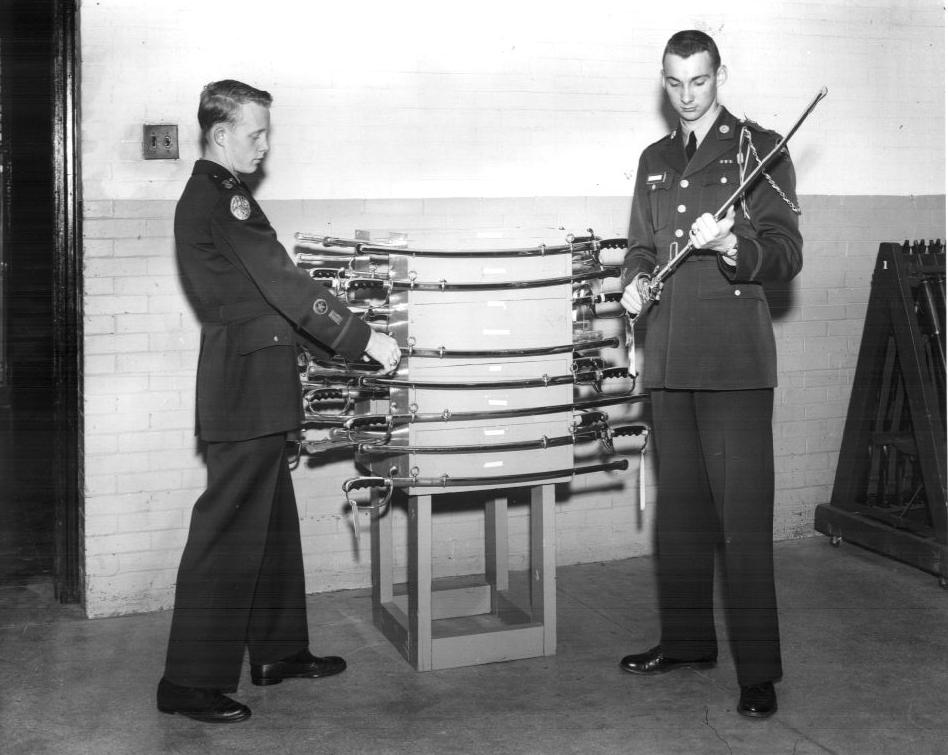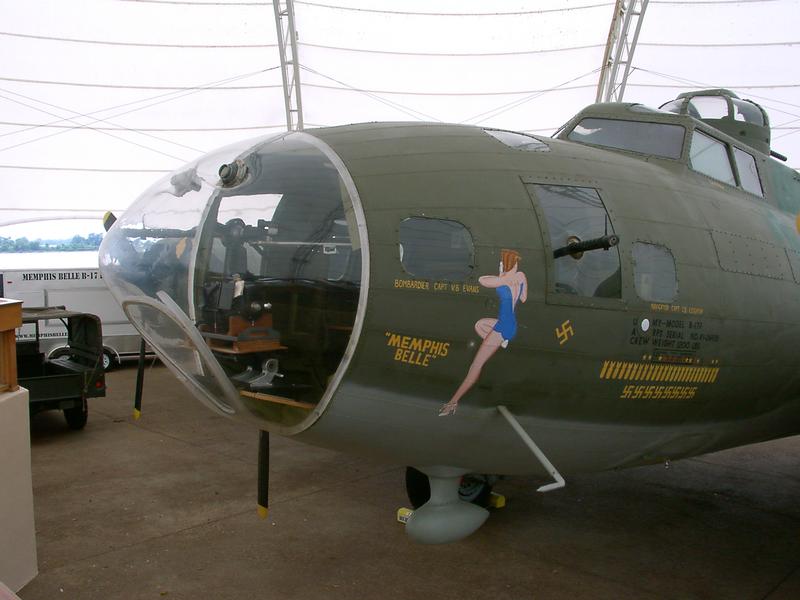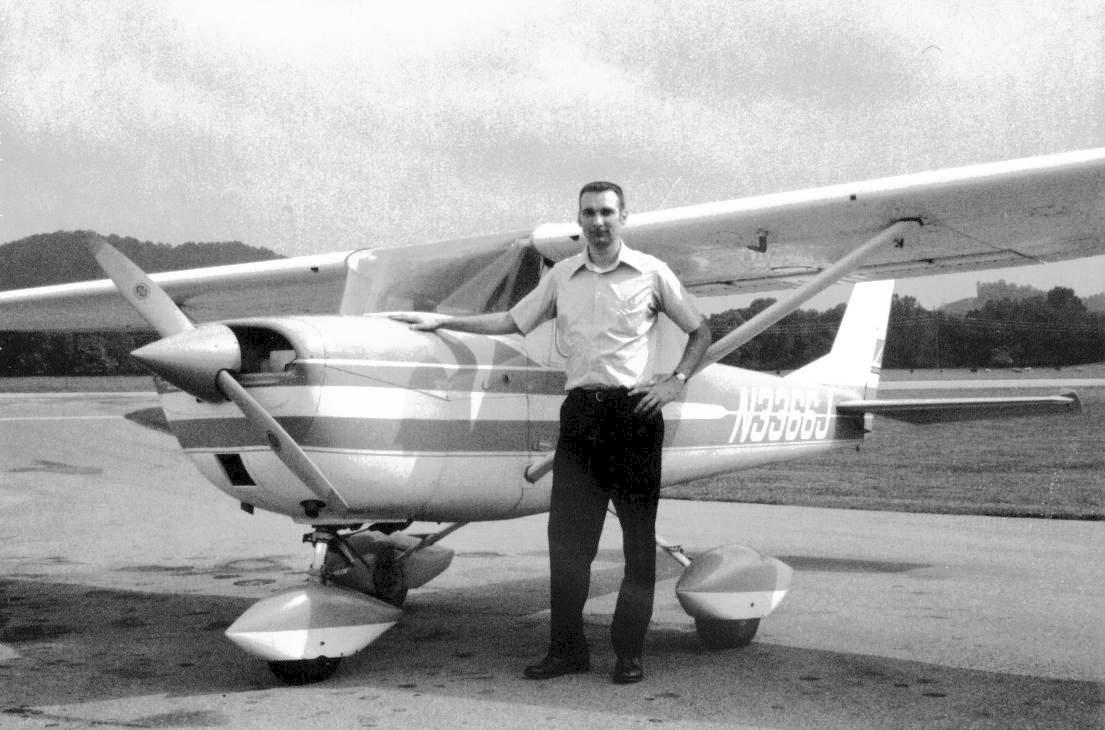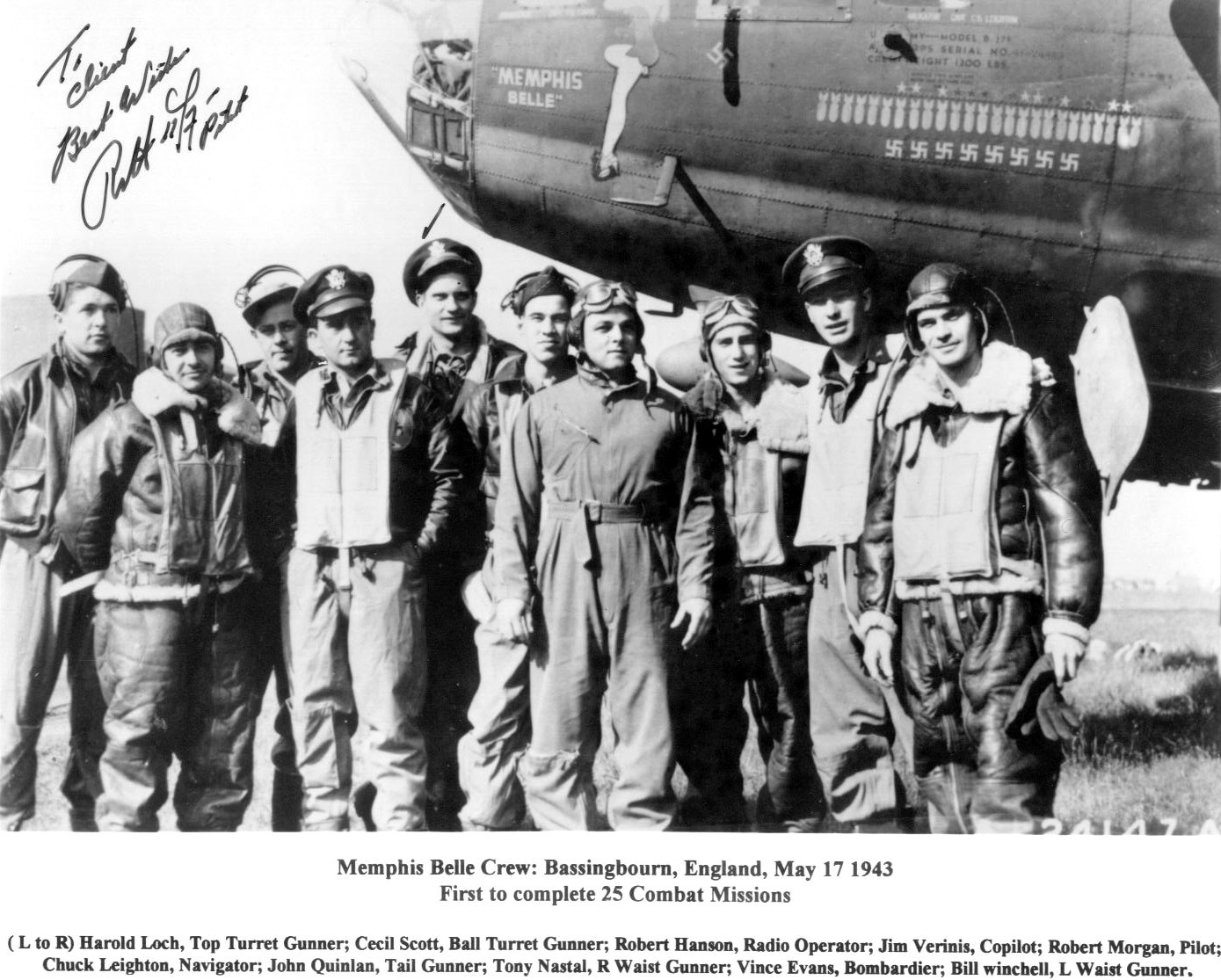The Memphis Belle
by J. C. Sprott
My parents must have enjoyed Christmas Eve in 1941. I surmise as much
by subtracting 266
days from
my birth date of September 16, 1942. I mention this not
just because conception is a logical starting point for one's memoirs,
but because it seems curious that my father, Frank Sprott, and his wife
Ila
would choose to have a child two weeks after the Japanese bombed Pearl
Harbor. I suppose they
had to do something while waiting for their other child, a 10-year-old
son named Frank Jr., to fall asleep so that they could put the
customary Christmas
presents under the tree. But it's hard to escape the conclusion that I
was an accident, although I never sensed that I was unwanted.
The odd timing was compounded by the fact that my father joined the
Navy shortly after the US entered World War II. The other sailors
called him "Pop" because he was married with children and at age 32
was somewhat older than most of them. His age probably kept him out of
combat, but he spent the first year of my life apart
from the rest of the family who lived in Memphis.
 For anyone who witnessed the sacrifices
and suffering during the War or for one born a few decades later when
wars
were not so noble, it's hard to understand the feelings that children
who were born during or shortly after World War II had about the
military and about the scientists who developed the bomb that so
abruptly ended the War. A favorite children's game was "playing war,"
and by age six, I was dressing in my brother's high school ROTC uniform
and marching around the yard.
For anyone who witnessed the sacrifices
and suffering during the War or for one born a few decades later when
wars
were not so noble, it's hard to understand the feelings that children
who were born during or shortly after World War II had about the
military and about the scientists who developed the bomb that so
abruptly ended the War. A favorite children's game was "playing war,"
and by age six, I was dressing in my brother's high school ROTC uniform
and marching around the yard.
A decade later, I followed the tradition
of
my father and
brother by becoming an officer in high school ROTC, and I might have
had a military
career had I not developed such a love for science. The 400 M-1 rifles
and shooting range in the basement of our high school probably didn't
last
much beyond my graduation in 1960 when I entered MIT with a student
deferment from the draft.

One of
my earliest memories was when my brother used to take me to the
National Guard Armory in
Memphis where a B-17 bomber called the Memphis
Belle sat outside on a pedestal. It was open for anyone to explore
until it was
eventually
vandalized and closed to the public. I would crawl into every space
inside that airplane and would sit in the cockpit pretending to be the
pilot or in one of the gunner's positions pretending to shoot down
enemy planes. I suppose I was 7 or 8 years old at the time. I didn't
know much about the airplane or its history except that it was used in
the War, and it was filled with instruments, electronics, and other
gadgets that certainly fueled my budding interest in science. I hadn't
seen the documentary film about the plane and its
crew that was made in
1944 or the dramatization that was
later made in 1990.
 That early exposure to airplanes, as
well as a ride
in a Piper Cub that my father arranged with one of his friends, planted
the desire to someday learn to
fly -- a dream that was fulfilled only at age 28 after finishing
college
and graduate school. Shortly after taking my first real job as a
research physicist at the Oak
Ridge National Laboratory in Tennessee, I saw a plane flying over the
city carrying a banner reading "Learn to Fly - Powell Airport." The
next
day I was at the airport taking flying lessons, and within a few months
I became a
licensed private pilot.
That early exposure to airplanes, as
well as a ride
in a Piper Cub that my father arranged with one of his friends, planted
the desire to someday learn to
fly -- a dream that was fulfilled only at age 28 after finishing
college
and graduate school. Shortly after taking my first real job as a
research physicist at the Oak
Ridge National Laboratory in Tennessee, I saw a plane flying over the
city carrying a banner reading "Learn to Fly - Powell Airport." The
next
day I was at the airport taking flying lessons, and within a few months
I became a
licensed private pilot.
The story might have ended there except for a small
announcement I saw
in the newspaper after some 30 years of flying small
airplanes and having many adventures of my own. It said that the B-17
replica that was used in the 1990
movie
along with the pilot of the original Memphis Belle were coming to the
airport at Madison, Wisconsin where I then lived. It never
occurred
to me that the pilot would still be alive, and I knew I had to meet him.
On the appointed day, May 31, 2003, I went out to the airport and saw
the plane that
looked so familiar, and thoughts of the past poured over me. The plane
somehow seemed a bit smaller than I remembered, but everything looks
larger than life when one is a child. I suppose I should have paid the
$10 they were asking for a walk-through of the plane, but somehow I
felt that I should not have to pay to renew an acquaintance with such
an old friend, especially since it was not even the real Memphis Belle.
Anyway, I was really there to meet the pilot.
 And
so I hurried over to the hanger where I saw an elderly gentleman
sitting alone at a small table with an array of photographs spread
before him. He seemed like a small man, but with a wiry, rugged
appearance, and I could imagine him being able to pilot a B-17 even at
his advanced age. I tentatively asked "are you the pilot of the
original Memphis
Belle." "Yep, I'm Robert
Morgan." We shook hands and I told him how I
had grown up in Memphis shortly after the War, developed a love for
aviation by crawling through his airplane as a child, and eventually
became a private pilot. "You're not the one who vandalized it, are
you?" he asked with a smile. "Absolutely not! In fact, I was
heartbroken to see what others did to the plane and very sad when I was
no longer able go inside of it." I paid $10 to a woman who was hovering
nearby to purchase a photograph of the plane with its original crew,
and I asked
Colonel Morgan to autograph it for me. "To Clint ... Best wishes ...
Robert Morgan - Pilot" he wrote and added an arrow pointing to himself
in the photograph.
And
so I hurried over to the hanger where I saw an elderly gentleman
sitting alone at a small table with an array of photographs spread
before him. He seemed like a small man, but with a wiry, rugged
appearance, and I could imagine him being able to pilot a B-17 even at
his advanced age. I tentatively asked "are you the pilot of the
original Memphis
Belle." "Yep, I'm Robert
Morgan." We shook hands and I told him how I
had grown up in Memphis shortly after the War, developed a love for
aviation by crawling through his airplane as a child, and eventually
became a private pilot. "You're not the one who vandalized it, are
you?" he asked with a smile. "Absolutely not! In fact, I was
heartbroken to see what others did to the plane and very sad when I was
no longer able go inside of it." I paid $10 to a woman who was hovering
nearby to purchase a photograph of the plane with its original crew,
and I asked
Colonel Morgan to autograph it for me. "To Clint ... Best wishes ...
Robert Morgan - Pilot" he wrote and added an arrow pointing to himself
in the photograph.
The story ends on a sad note. A year later I saw a small
announcement in the newspaper that the pilot of the original Memphis
Belle had died on May 15, 2004 of complications from a fall. I will
always be grateful that I had the chance to meet the pilot of the plane
that kindled my interest in aviation and eventually led to a career in
science.
J. C. Sprott
September 2007
 For anyone who witnessed the sacrifices
and suffering during the War or for one born a few decades later when
wars
were not so noble, it's hard to understand the feelings that children
who were born during or shortly after World War II had about the
military and about the scientists who developed the bomb that so
abruptly ended the War. A favorite children's game was "playing war,"
and by age six, I was dressing in my brother's high school ROTC uniform
and marching around the yard.
For anyone who witnessed the sacrifices
and suffering during the War or for one born a few decades later when
wars
were not so noble, it's hard to understand the feelings that children
who were born during or shortly after World War II had about the
military and about the scientists who developed the bomb that so
abruptly ended the War. A favorite children's game was "playing war,"
and by age six, I was dressing in my brother's high school ROTC uniform
and marching around the yard. 
 That early exposure to airplanes, as
well as a ride
in a Piper Cub that my father arranged with one of his friends, planted
the desire to someday learn to
fly -- a dream that was fulfilled only at age 28 after finishing
college
and graduate school. Shortly after taking my first real job as a
research physicist at the Oak
Ridge National Laboratory in Tennessee, I saw a plane flying over the
city carrying a banner reading "Learn to Fly - Powell Airport." The
next
day I was at the airport taking flying lessons, and within a few months
I became a
licensed private pilot.
That early exposure to airplanes, as
well as a ride
in a Piper Cub that my father arranged with one of his friends, planted
the desire to someday learn to
fly -- a dream that was fulfilled only at age 28 after finishing
college
and graduate school. Shortly after taking my first real job as a
research physicist at the Oak
Ridge National Laboratory in Tennessee, I saw a plane flying over the
city carrying a banner reading "Learn to Fly - Powell Airport." The
next
day I was at the airport taking flying lessons, and within a few months
I became a
licensed private pilot. And
so I hurried over to the hanger where I saw an elderly gentleman
sitting alone at a small table with an array of photographs spread
before him. He seemed like a small man, but with a wiry, rugged
appearance, and I could imagine him being able to pilot a B-17 even at
his advanced age. I tentatively asked "are you the pilot of the
original Memphis
Belle." "Yep, I'm Robert
Morgan." We shook hands and I told him how I
had grown up in Memphis shortly after the War, developed a love for
aviation by crawling through his airplane as a child, and eventually
became a private pilot. "You're not the one who vandalized it, are
you?" he asked with a smile. "Absolutely not! In fact, I was
heartbroken to see what others did to the plane and very sad when I was
no longer able go inside of it." I paid $10 to a woman who was hovering
nearby to purchase a photograph of the plane with its original crew,
and I asked
Colonel Morgan to autograph it for me. "To Clint ... Best wishes ...
Robert Morgan - Pilot" he wrote and added an arrow pointing to himself
in the photograph.
And
so I hurried over to the hanger where I saw an elderly gentleman
sitting alone at a small table with an array of photographs spread
before him. He seemed like a small man, but with a wiry, rugged
appearance, and I could imagine him being able to pilot a B-17 even at
his advanced age. I tentatively asked "are you the pilot of the
original Memphis
Belle." "Yep, I'm Robert
Morgan." We shook hands and I told him how I
had grown up in Memphis shortly after the War, developed a love for
aviation by crawling through his airplane as a child, and eventually
became a private pilot. "You're not the one who vandalized it, are
you?" he asked with a smile. "Absolutely not! In fact, I was
heartbroken to see what others did to the plane and very sad when I was
no longer able go inside of it." I paid $10 to a woman who was hovering
nearby to purchase a photograph of the plane with its original crew,
and I asked
Colonel Morgan to autograph it for me. "To Clint ... Best wishes ...
Robert Morgan - Pilot" he wrote and added an arrow pointing to himself
in the photograph.